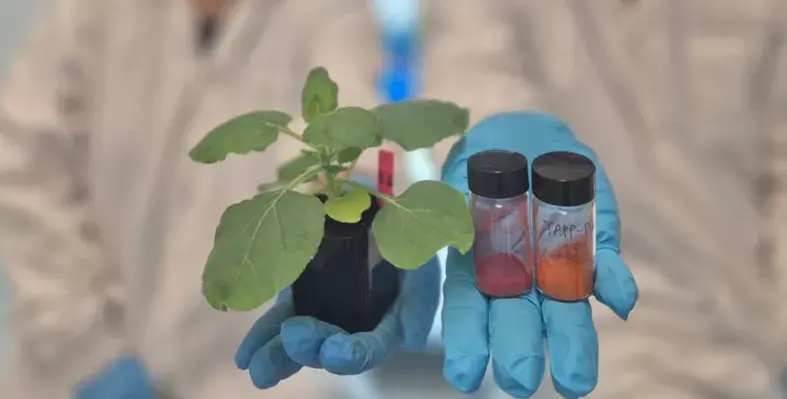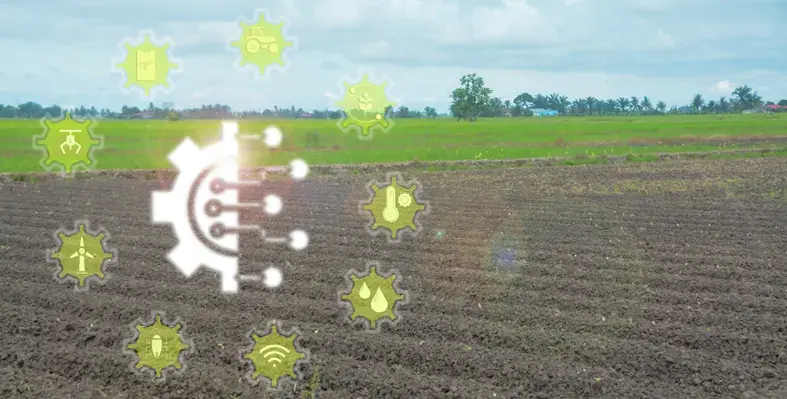
PH-sensitive chromic COF-based sensor powders developed by SMART DiSTAP researchers that exhibit visual colour changes upon early detection of drought stress in plants. (Image source: SMART)
Researchers from the Singapore-MIT Alliance for Research and Technology (SMART) have pioneered the world’s first Covalent Organic Framework (COF) sensors that provide an early indication of drought stress in plants
These sensors are integrated within silk fibroin (SF) microneedles that are capable of detecting pH changes in plant xylem tissues. This advanced technology can detect a reduction in acidity in plant xylem tissues, providing early warning of drought stress in plants up to 48 hours before traditional methods.
A number of agricultural challenges – including those posed by climate change, rising costs and lack of land space – continue to escalate and adversely affect crop production and yield, due to which farmers are often unable to implement proactive measures or pre-symptomatic diagnosis for early and timely intervention. This underscores the need for improved sensor integration that can facilitate in-vivo assessments and timely interventions in agricultural practices.
SMART’s breakthrough addresses a long-standing challenge for COF-based sensors, which were - until now - unable to interact with biological tissues. COFs are networks of organic molecules or polymers - which contain carbon atoms bonded to elements like hydrogen, oxygen, or nitrogen - arranged into consistent, crystal-like structures, which change colour according to different pH levels.
This novel COF-based sensor allows early detection of drought stress in plants through real-time measuring of pH levels in plant xylem tissues, thereby helping farmers optimise crop production and yield amid evolving climate patterns and environmental conditions.
DiSTAP researchers designed and synthesised four COF compounds that showcase tunable acid chromism – colour changes associated with changing pH levels – with SF microneedles coated with a layer of COF film made of these compounds. In turn, the transparency of SF microneedles and COF film allows in-vivo observation and visualisation of pH spatial distributions through changes in the pH-sensitive colours.
In a paper titled, 'Chromatic Covalent Organic Frameworks Enabling In-Vivo Chemical Tomography' recently published in Nature Communications, DiSTAP researchers documented their groundbreaking work, which demonstrated the real-time detection of pH changes in plant tissues. Significantly, this method allows in-vivo 3D mapping of pH levels in plant tissues using only a smartphone camera, offering a minimally invasive approach to exploring previously inaccessible environments compared to slower and more destructive traditional optical methods.
“SF microneedles are robust and can be designed to remain stable even when interfacing with biological tissues. They are also transparent, which allows multidimensional mapping in a minimally invasive manner," said senior postdoctoral associate at SMART DiSTAP and co-first author, Dr Yangyang Han. "Paired with the COF films, farmers now have a precision tool to monitor plant health in real time and better address challenges like drought and improve crop resilience.”









